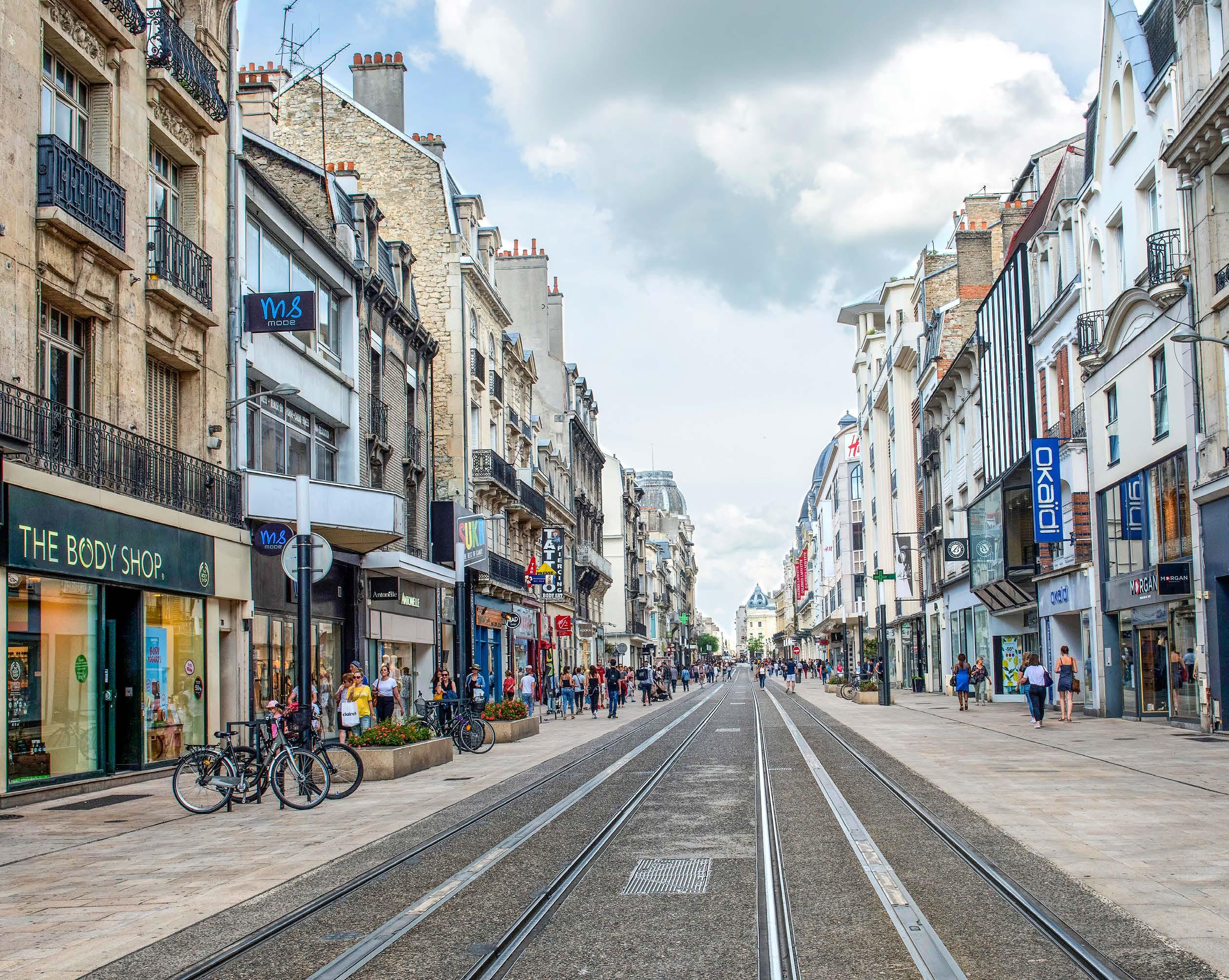
4 minute read
The Capital of CHAMPAGNE
By Mark Stevens
The city of Reims in the Champagne region of France offers up delightful diversions, particularly if you happen to be a history buff or wine-lover.
We’re marching through a dark, damp tunnel deep beneath the city of Reims in France’s Champagne region. I feel like that character in the Edgar Allan Poe story, lured by the villain deep into a wine cellar and trapped forever. But not to worry: Bastien Blanchard, our guide, knows these tunnels inside out. My wife and I have signed up for a cellar tour of the champagne house of Mumm’s, a capital champagne in the capital of Champagne. We’re learning the story of “the drink of kings” from this iconic region’s unique microclimate to the role of these vast (25 kilometres’ worth) arched tunnels.

MUMM GIFT SHOP ©MARK STEVENS
Best yet, there’s light at the end of these tunnels: a tasting at tour’s end back on the surface in a room boasting great arched windows, sunbeams shimmering on crystal champagne flutes and a battalion of bottles lined up along a hardwood bar. Those bottles – magnums – are considered the “perfect size for champagne,” says Blanchard, but I’m still taken by a display of different bottles we’d encountered minutes ago in the caverns below. The larger bottles were named for Old Testament personages: pick up a Jeroboam, send out for a case of Methuselah, crack open a Balthazar.
Now Blanchard explains both the samples we’ll imbibe and the grapes that infuse them as his assistant opens bottles with that characteristic “pop”. The champagne: Cordon Rouge. The grapes: Chardonnay, Pinot Meunier, pinot noir.

MUMM CHAMPAGNE ©MARK STEVENS
Earlier on (back in the underworld), we’d learned about the special qualities of the Champagne region for growing. “It’s a unique microclimate,” said Blanchard, “particularly the chalk subsoil. Great drainage for growing and these chalk tunnels provide just the right humidity and temperature for ageing.”
Unique these features may be, but they also explain why this Mumm’s tour isn’t. At least six other “champagne houses” (the cellars at Taittinger were originally Roman mines) offer similar tours. Head out to the surrounding countryside, dining with perfect pairings in view of vineyards that decorate the region’s voluptuous hills or visiting the Museum of the Vine at nearby Verzenay.
Or just explore this liquid legacy right in Reims. “Beneath the city of Reims,” says Blanchard, “there are 250 kilometres of chalk and limestone vaults where literally millions of bottles are ageing.” Here in the tasting room, he shares the story of this particular champagne house.

LOCAL TRANSPORTATION IN REIMS ©MARK STEVENS
In the 19th century, three brothers from a German family of wine producers and merchants travelled to Reims based on the excellent reputation of local sparkling wines. They formed a new company, G.H. Mumm, in 1827 and the rest is history. History abounds here, a discovery we make when we spend a couple of days exploring the allures of Reims.
During a stroll through this city where Roman ruins still stand, we stop and reflect in a little garden surrounded by a stone wall. Memorial plaques are affixed to the wall inside. The gardens pay tribute to local victims of the Gestapo. Just west of here is a sombre red brick building that was once a schoolhouse. Now the Museum of the Surrender, it houses the very room where the Germans surrendered to the Americans at the end of World War II.

MUMM CHAMPAGNE TESTING ©MARK STEVENS
As a result of damage from almost continual artillery barrages during World War I, Reims is now an intriguing mélange of baroque and art deco architecture, rebuilt from the ruins. The city’s imposing cathedral boasts a pedigree spanning a millennium along with scars from Reims’ more recent bellicose history. For nearly a thousand years, the coronations of French kings were celebrated here. Joan of Arc oversaw the crowning of Charles VII inside these very walls.
Boasting twin sky-reaching spires decorated by massive flying buttresses, sculptures and a façade delicate as lace though carved from stone, Notre Dame of Reims cathedral was severely damaged by those onslaughts of artillery. Today, along with the adjoining museum in the Palace of Tau, the cathedral is one of several local UNESCO World Heritage sites.

NOTRE DAME OF REIMS CATHEDRAL ©MARK STEVENS
At the tour’s end, my wife and I browse the Mumm gift shop, emerging with a set of crystal flutes and a magnum of Cordon Rouge. Now it’s on to lunch at a sidewalk bistro then a visit to the Fine Arts Museum housed in an 18th-century former abbey. At day’s end, it’s back to our humble accommodation. Tomorrow, we’ll drive to Paris; we’ll fly back to Canada. But tonight, we’ll get our kicks from champagne.










